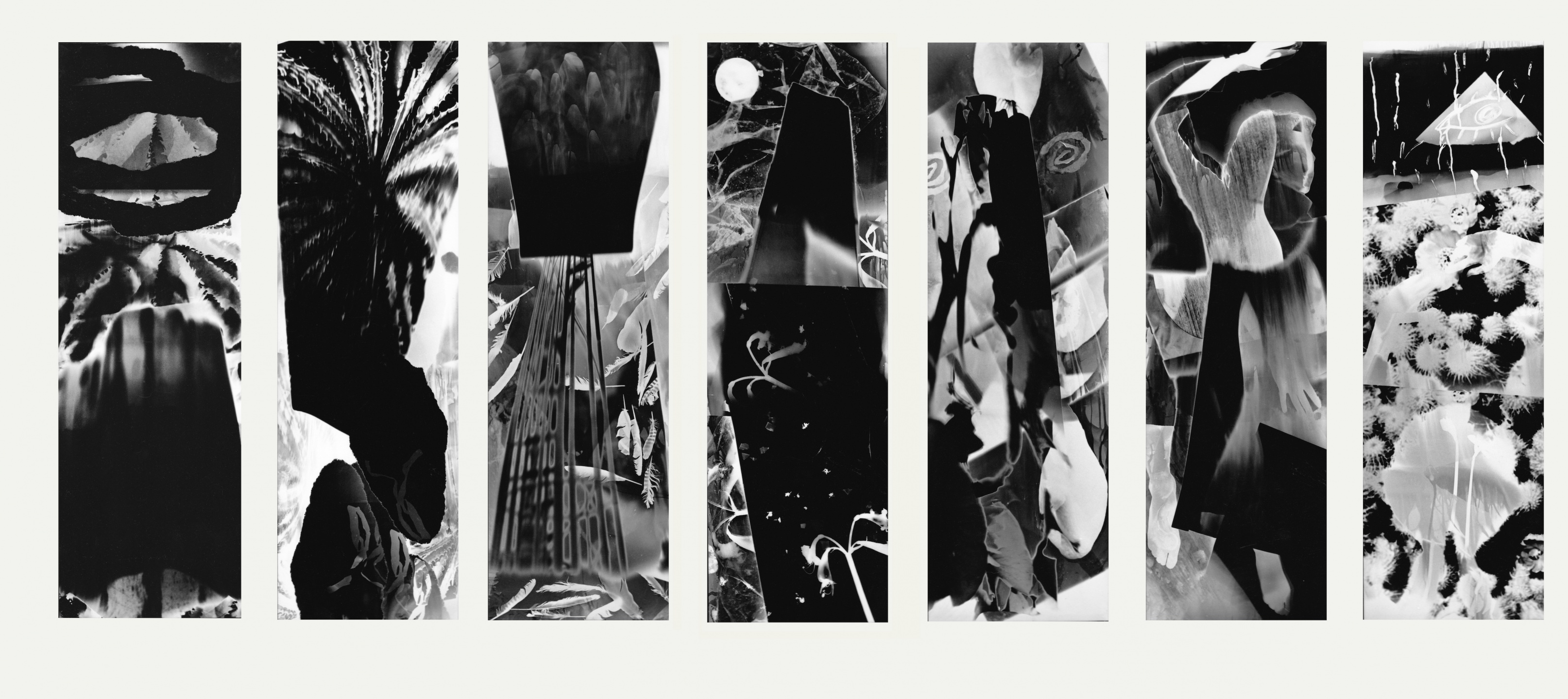The story of Genesis was reportedly written down twenty-six centuries ago, when the Israelites were in exile by the rivers of Babylon. The stories are not accounts of events. “They contain hidden messages—wisdoms in narrative form that people in ancient Israel used to encourage one another in difficult times.”
In all cultures, people have asked themselves where they come from—for thousands of years. With globalization and the rise of science, one might expect creation stories to lose their meaning, but the opposite may be true in a time when life on Earth is threatened by climate change.
“All stories are related; new ones are woven with threads of the old,” writes Robin Wall Kimmerer in one of the final chapters of her remarkable book Braiding Sweetgrass. She cites an ancient Mayan creation story and concludes that retelling and reinterpreting stories is an act of reciprocity.
I illuminated various materials that I associated with the creation story on large sheets of photographic paper, cut directly from the roll. In one organic movement, the images of the first seven days came to life in the darkroom. Seven parts, ending with the painted all-seeing eye—a wink to the Biblical phrase, “And God saw that it was good.”
To represent the creation of humankind on the sixth day, I lay down in different positions on the paper and pressed the enlarger switch. The light did not pass through me but descended upon me, revealing the contours of my body. A shadow of myself appeared in the places where I had lain.
For a moment, did I play God in the darkroom—painting with light in darkness, rolling the sheets through the developer, fixing them, and rinsing them in flowing water? Out of the water, the paper must dry to return to its original state—not white and empty now, but filled with deep emotion in black, white, and shades of gray.
My God, the days, the years rush by.
Old stories give our lives a future…
- BarBara Hanlo



